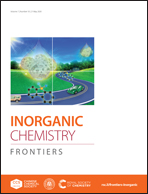Design strategy of rGO–HNT–AgNPs based hybrid nanocomposite with enhanced performance for electrochemical detection of 4-nitrophenol†
Abstract
Monitoring of toxic organic pollutants in the atmosphere is mandatory. Among them, nitrophenols are considered extensive toxic organic pollutants which cause many adverse effects through their consumption in the biosphere. A highly precise and sensitive electrochemical sensor to detect 4-nitrophenol based on halloysite nanotubes (HNTs) with silver nanoparticles (AgNPs) decorated on reduced graphene oxide (rGO) is reported. The electrochemical performance of the prepared sensor was estimated through cyclic voltammetry and differential pulse voltammetry. The prepared nanomaterial was employed for the efficient detection of 4-nitrophenol. The fabricated sensor exhibited an extensive working range from 0.1 to 363.9 μM under optimized conditions with a lower detection limit of 48.6 nM for 4-nitrophenol (4-NP). The nanocomposite rGO–HNT–AgNP modified electrode showed a high sensitivity of 35.25 μA μM−1 cm−2, which is much higher than that of the bare electrodes. Furthermore, the evaluation of the developed sensor was done on the basis of practical applicability by determining the presence of 4-NP in real samples obtained from water resources with RSD ± 3.17%.



 Please wait while we load your content...
Please wait while we load your content...